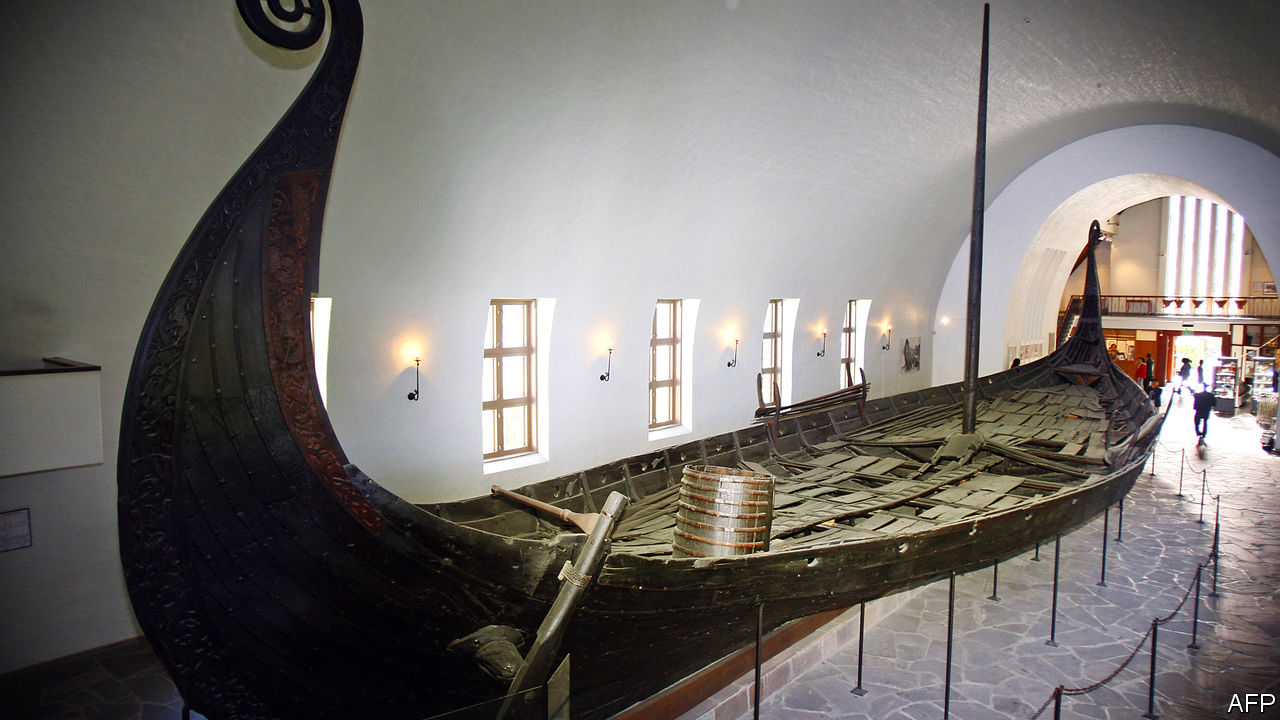
I do not think that any of this was sudden but it does tell of the methodology that must trace back to before the Bronze Age. Proofing a ship against worms and fouling has been a constant to today.
The viking Age was a natural response to opportunity created by the Roman Collapse itself in the West. Recall this was also preceded by Celtic shipping superior to Roman shipping. Thus we have around 500 AD the first real break in serious Sea protection in Western Europe.
The recipe sounds pretty obvious and also basic. Adding seal oil to pine pitch may well make wood highly resistant to worms and fouling and experiments indicate as much..
New evidence of how the Norse became long-distance mariners
They made tar in industrial quantities, to coat ships’ hulls and sails
Nov 1st 2018
ACCORDING TO THE Saga of Erik the Red, “shipworm will not bore into the wood which has been smeared with the seal-tar”. Viking scholars debate the precise meaning of “seal” in “seal-tar”. One interpretation is that the Scandinavian conquerors mixed tar, or pitch, with animal fat and some experiments suggest this may indeed keep shipworm at bay. What is clear is that tar was an important marine technology, and new finds suggest that a vast industry making it emerged at the beginning of the Viking era, helping enable their conquests.
The oldest tar pits in Sweden date from around 100AD to 400AD. The first were discovered in the early 2000s, and are found close to old settlements, suggesting that the tar was for coating houses and household items. It was made by stacking pine wood into conical pits a metre or two across, setting the wood on fire and covering it with turf and charcoal to encourage a slow combustion. In this way, the wood’s resin would turn to tar and drip out of the cone’s bottom into a buried container.
However, as Andreas Hennius, an archaeologist at Uppsala University, reports in this month’s Antiquity, around the eighth century something shifted. The pits got much bigger—reaching eight to ten metres in diameter—and moved far into the forest. These pits could have made between 200 and 300 litres of tar in a single production cycle.
Mr Hennius argues that the builders needed all this tar for ships. The eighth century was when sails arrived in Scandinavia. That, in his view, is no coincidence. Tar has been found on hulls, rigging and small fragments of sails from Viking vessels. It was used to waterproof the hulls and windproof the sails. It was also, according to Morten Ravn of Viking Ship Museum in Roskilde, Denmark, mixed with pigments such as ochre to give sails colour and offer protection from damaging ultraviolet rays.
Sailing suddenly expanded people’s maritime reach, creating opportunities both for long-distance trade and for the large, swift attacks that define the Viking age. Vikings conquered half of England and part of northern France. They raided as far as the Mediterranean and left monks in coastal monasteries quaking in their cassocks. “From the fury of the Northmen, O Lord, deliver us!” these monks prayed. From their tar pits, too.
No comments:
Post a Comment